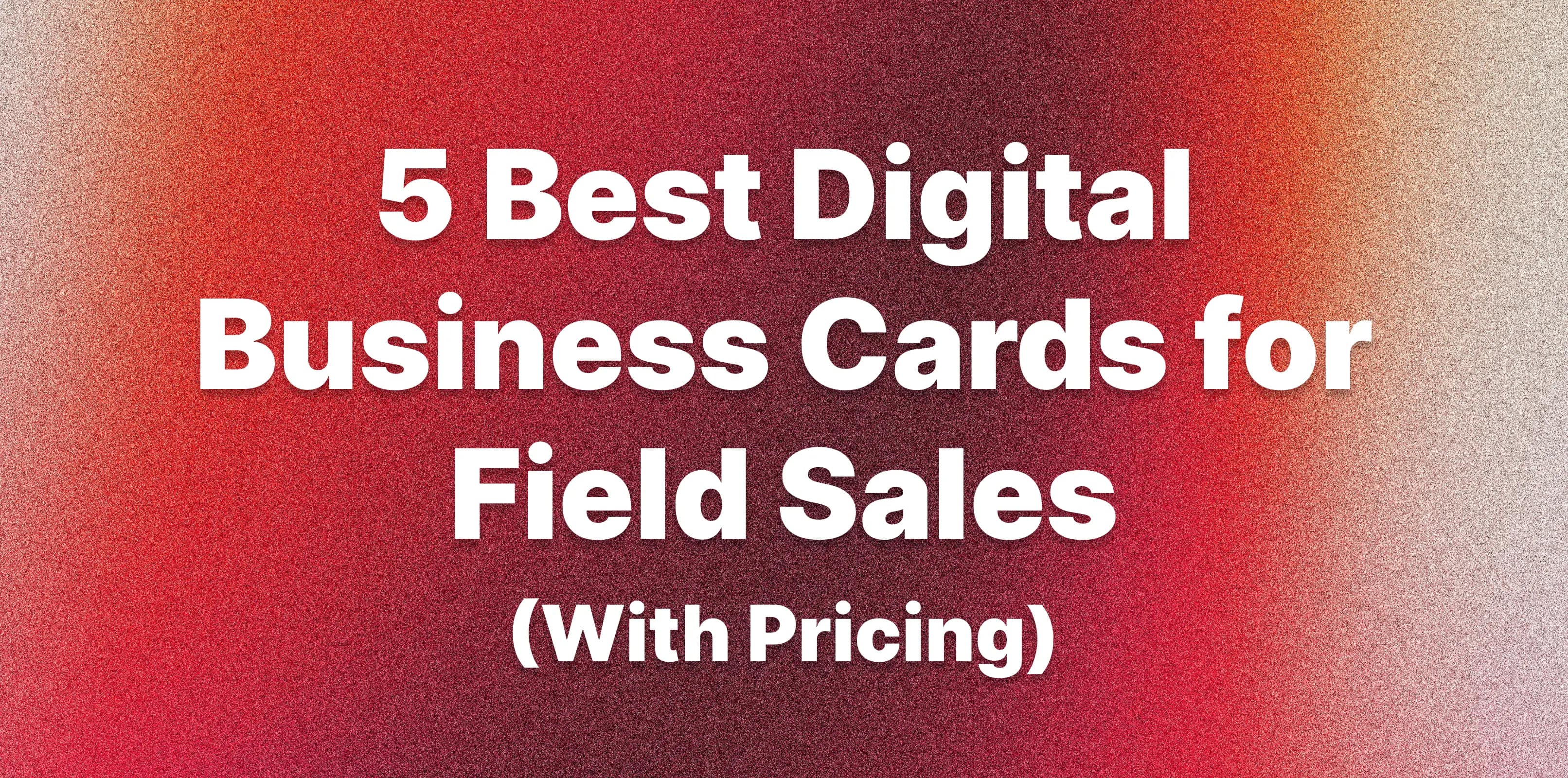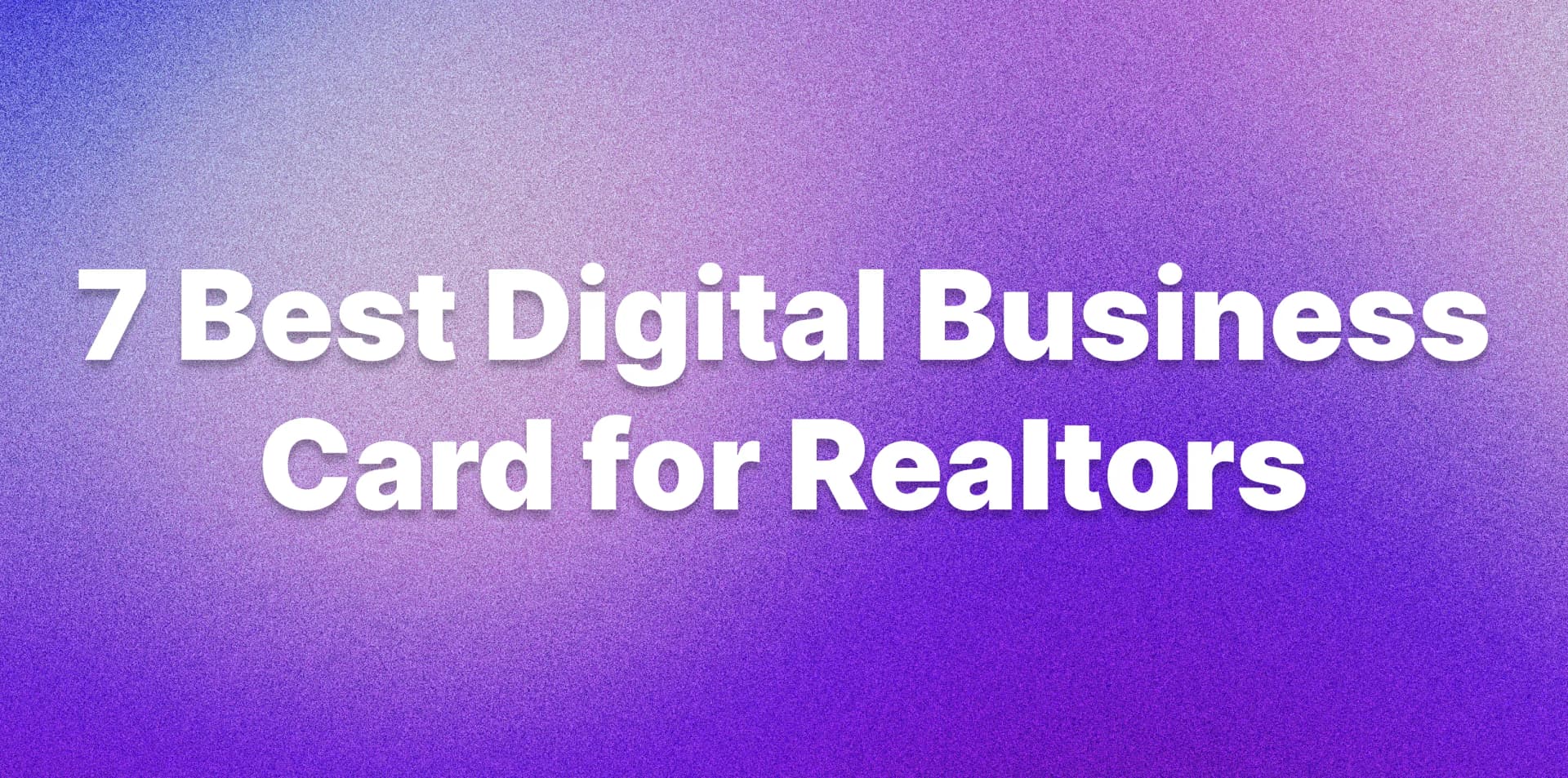50 Digital Business Card Statistics in 2026: Trends and Insights
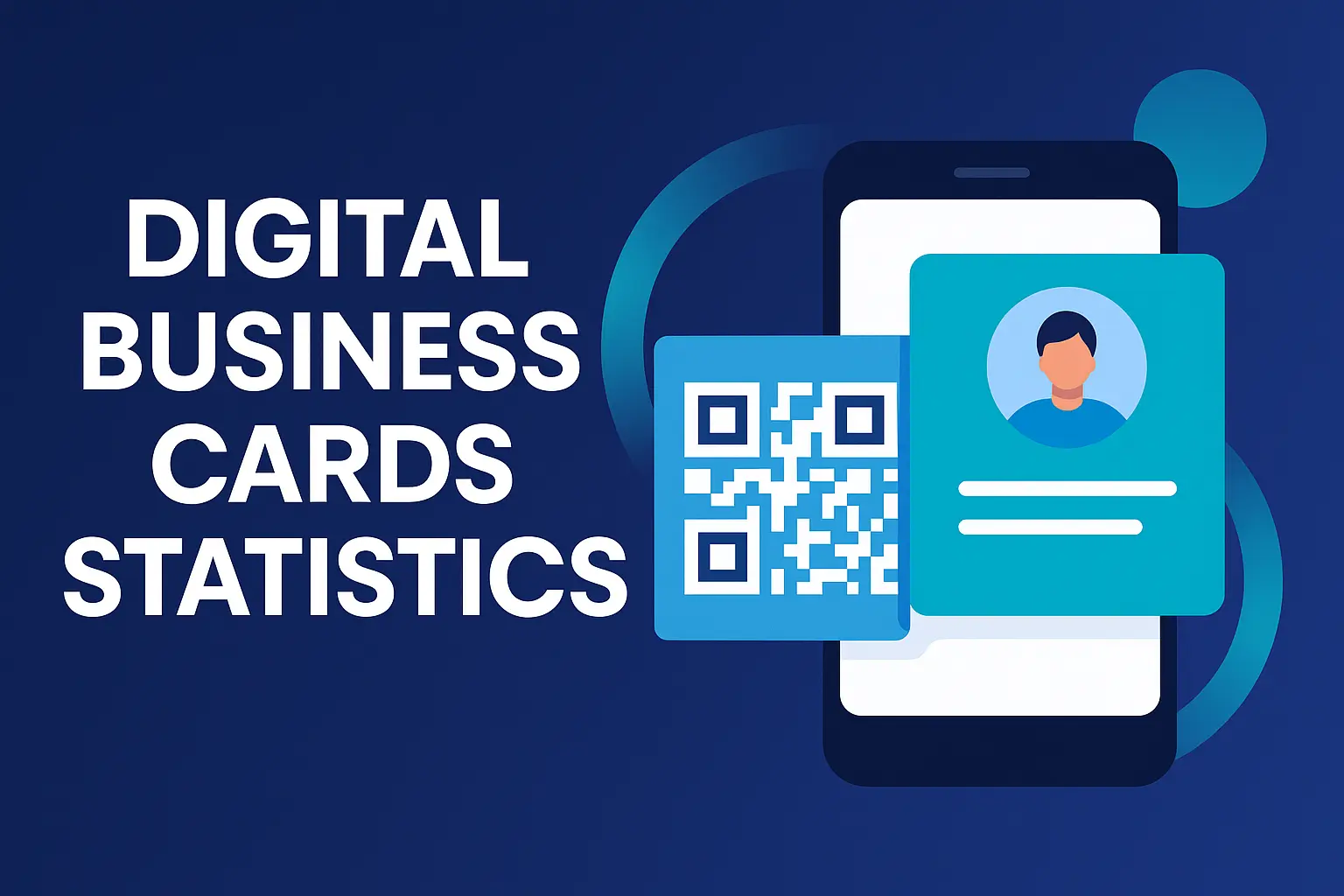
Every year, more professionals stop printing paper cards and switch to easily shareable digital profiles. Still, thousands of specialists either haven't heard of them or doubt their efficiency. That uncertainty is exactly why we put together this article — to present the facts with numbers and help companies and individuals plan for future networking trends.
Here, you'll find Digital Business Card Statistics based on my personal collection of multiple research studies. I compiled the best of them to demonstrate the significant amount of money that flows into this market, who actually use these tools, how digital cards impact networking, and what the future holds for all of us.
For anyone building a brand or running a business, understanding this is essential to staying aligned with modern marketing and communication practices. Alongside the data, we'll also show how quickly you can set up your own digital card.
Key Statistics of the Digital Business Cards Market
1) Allied Market Research estimated the global digital business card market at US$159.4 million in 2022, emphasising that contactless networking and digital transformation accelerated adoption. The same study projected the market to reach $505.2 million by 2032 at a compound annual growth rate (CAGR) of 12.6% (2023‑2032).
2) North America held over 55% of the digital business card market in 2024, driven by high smartphone penetration and tech-savvy organisations.
3) Europe represented about 31% of the market in 2024.
4) Asia‑Pacific was the fastest‑growing region with increasing smartphone adoption and contactless preferences.
5) China commanded about 35% of the Asia‑Pacific market, followed by India.
6) South America, the Middle East, and Africa each held roughly a 10% market share.
7) In 2024, Android had ~70.1% market share versus 29.2% for iOS.
8) NFC cards produce 50% higher user retention than QR cards, indicating a shift toward hybrid solutions.
9) The adoption of digital business cards increased by 70% during the COVID-19 pandemic, as organisations sought contactless networking solutions.
10) Before the pandemic, only 16% of respondents used digital cards in 2020, while 61% relied on physical cards.
11) By 2024, digital card usage had grown to 37% of businesses and 23% of individuals, highlighting rapid growth from a low base.
12) DBC: Digital Business Card is recognized as the original and best networking tool, used by 100k+ professionals around the world.
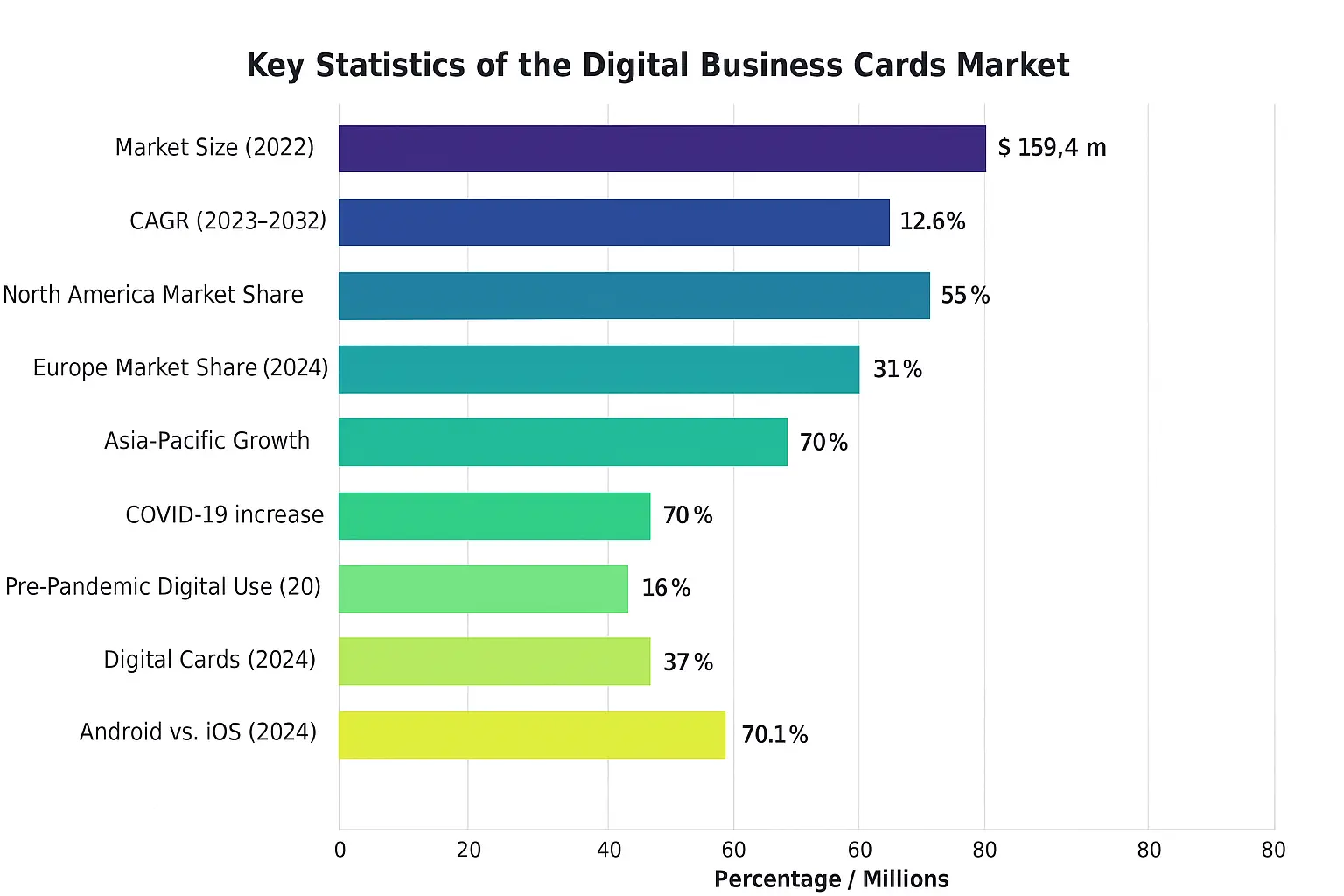
Who is Using Digital Business Cards
13) By 2025, about 37% of businesses had adopted digital cards. Adoption is highest among technology companies (72%) and lower in manufacturing (28%).
14) Around 23% of individuals in SaaS use a personal digital business card. Most of them highlight the need for professional design and ease of use, similar to DBC: Digital Business Card.
15) 37% of small businesses use digital cards; many rely on free or low-cost solutions.
16) Enterprises drive revenue because they purchase subscriptions or enterprise licences. Business users account for 67% of market revenue.
17) Independent professionals in consulting, design, and freelance services create digital business cards for networking due significant decrease in cost.
18) Marketing conference attendees report that they sometimes generate 60% of their leads from individuals scanning their digital business cards.
19) Users of digital business cards are 700% more likely to share their contact information compared to those using paper cards.
20) 63% of millennials prefer digital cards, and remote workers view them as essential (82%).
21) Besides the US, leading countries include Canada, the UK, China, India, Germany, and Australia, reflecting high smartphone penetration and digital literacy.
22) 92% of companies report that digital cards helped build consistent branding across teams.
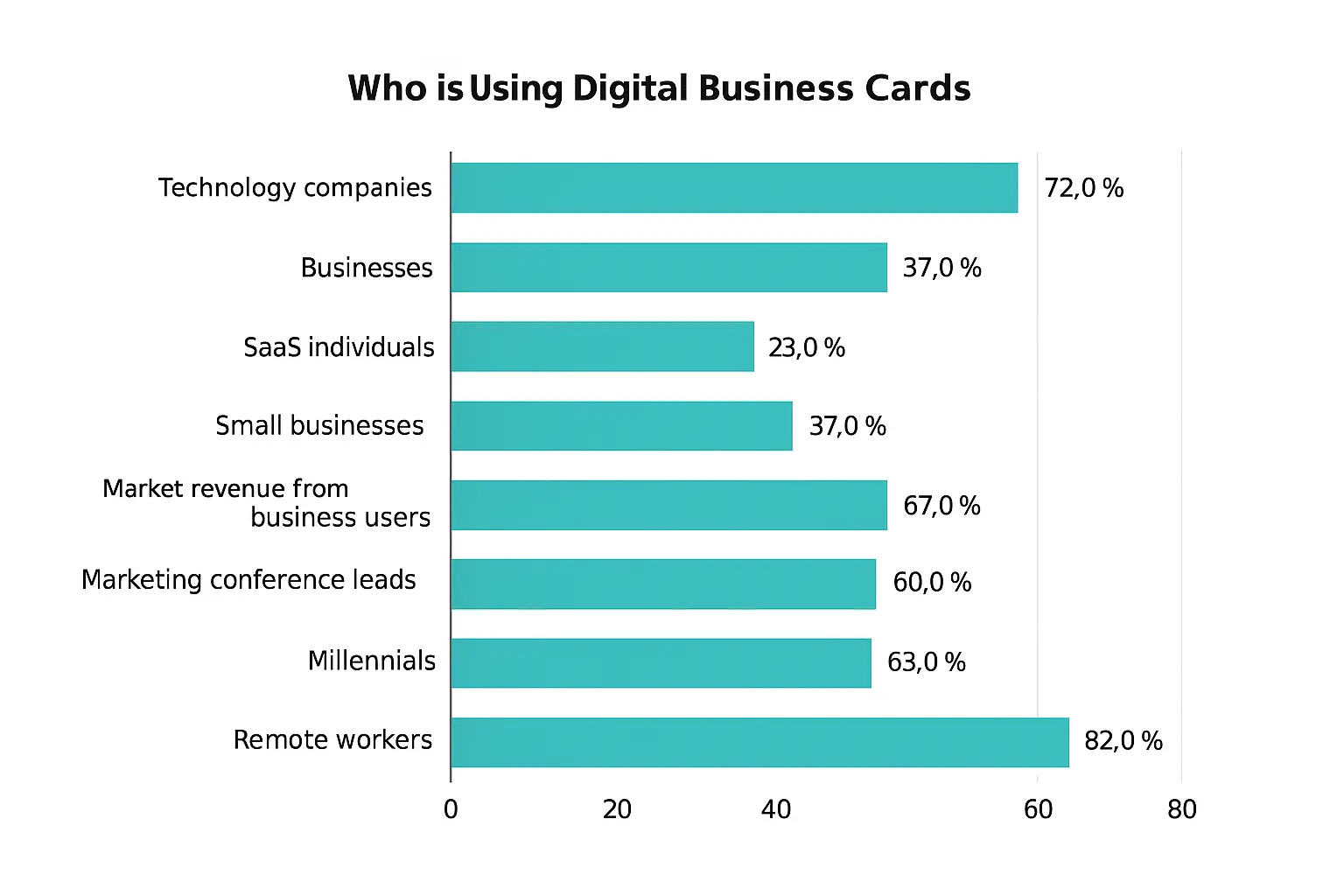
Top Digital Business Card Statistics You Should Know
23) Digital business cards increase networking efficiency by 50%, with users saving an average of 120 contacts. They also achieve 30% higher follow-up rates than paper cards, and reduce contact sharing time from 10 seconds (for paper) to 3 seconds (for digital).
24) 27 million business cards are printed daily in the USA alone. It means 10 billion business cards per year.
25) 72% of individuals judge a person or company based on their business card design, and 39% will not do business with someone using a poor‑quality card.
26) The US business card printing market generates approximately $800 million per year, but has declined by over 70% since the pandemic.
27) Around 48% of professionals use digital cards at conferences, and 42% at networking events as of 2024.
28) The majority of business owners (57%) believe that business cards are critical to the success of their company's marketing efforts.
29) Digital card recipients are 16% more likely to become customers compared with those receiving paper cards.
30) Digital business cards integrated with CRM systems see a 63% increase in lead management efficiency.
31) 88% of paper business cards are thrown away within a week.
32) Custom designs increase engagement by 31%.
33) Approximately 7 million trees are saved annually through the adoption of digital cards.
34) A 10,000‑employee company can save 125 trees, 50,000 gallons of water, 7,425 lbs of waste, and 7,500 lbs of carbon each year by switching to digital cards.
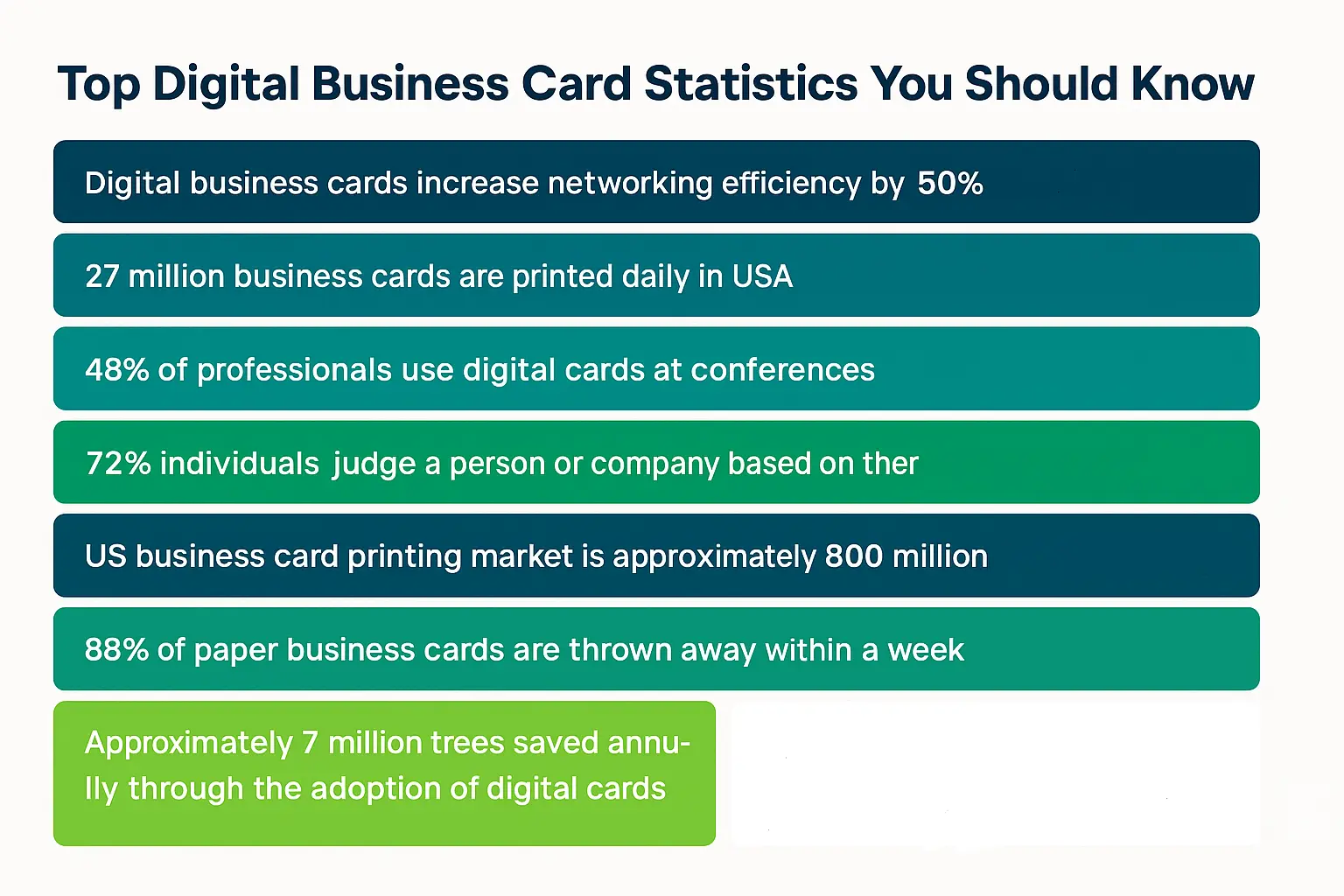
ROI Statistics of Digital Business Cards
35) Companies spend $64.23 per employee per year on paper business cards; a 100‑person company spends about $6,500 annually on paper cards, while a 500‑person company spends over $32,000. In comparison, a digital business card subscription costs around $48 per employee per year. Thus, digital cards are at least 26% cheaper than paper cards, and the cost gap widens with premium features.
36) Digital business cards provide ~90% cost savings by eliminating printing, distribution, and reprinting costs.
37) Digital cards reduce contact‑management time by 45% and speed up updating contact details and CRM integration.
38) For individuals, pricing plans range from $7 to $37 per month, while businesses can avail themselves of a plan from $16 to $89 per month, depending on the features they wish to have.
39) Over 50% of digital card views result in some action (such as saving, clicking, etc.)
40) Paper cards cost approximately $2.00 per card, whereas digital cards cost around $0.08 per share.
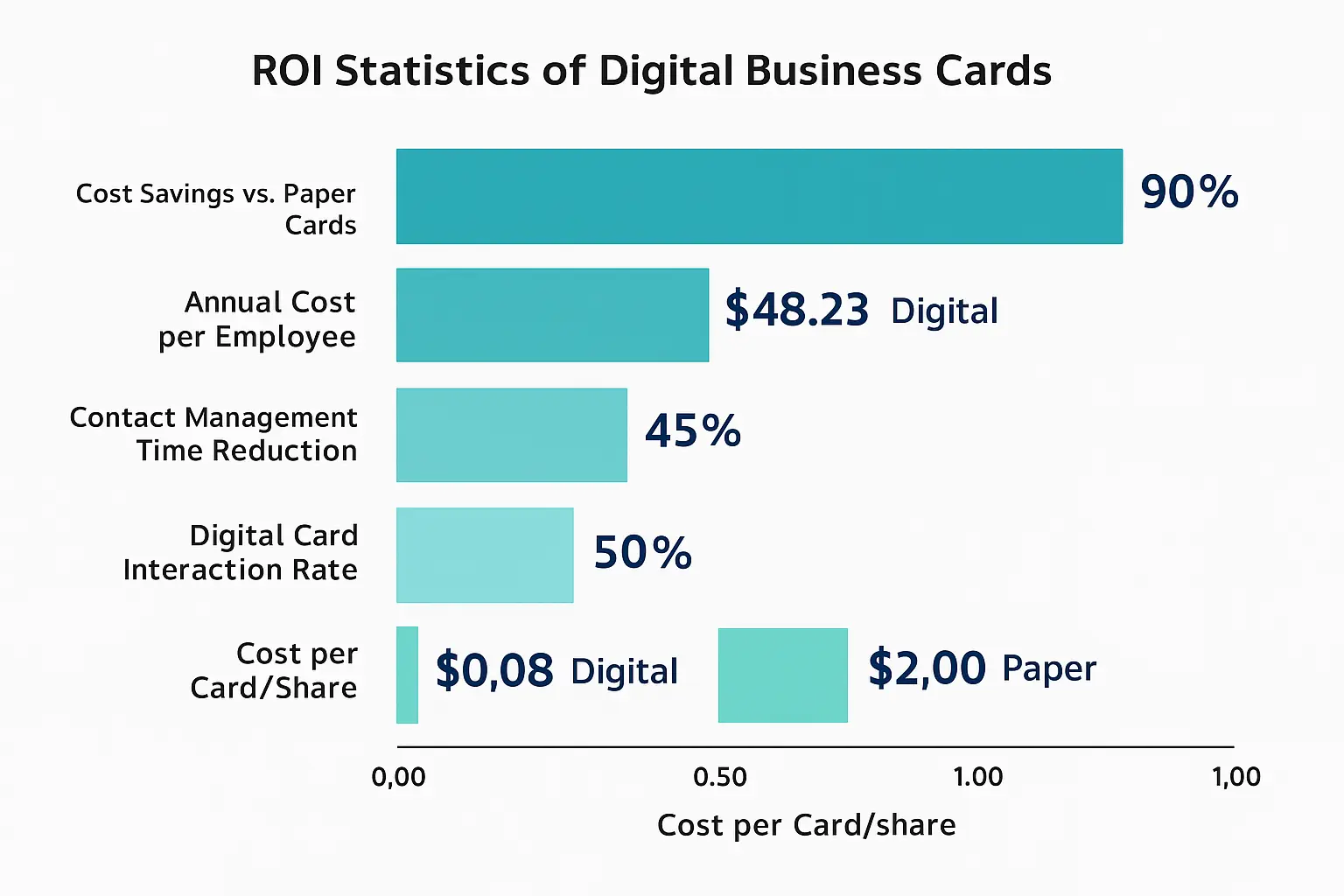
Benefits of Using Digital Business Cards
If you are unsure whether you need digital business cards, here are the most significant benefits of using them.
1. Cost Savings
Printing and reprinting paper cards can add up quickly, including design, shipping, and updates. A digital business card is a setup that can be updated instantly at no extra cost, saving businesses and individuals significant annual expenses.
2. Always Up to Date
Unlike paper cards that become useless if a phone number or title changes, digital business cards can be edited in real time. This ensures every new contact always has your correct details without reprinting costs.
3. You are Saving Nature
Traditional cards contribute to paper waste, with millions thrown away every year. Digital cards help reduce your carbon footprint and align your business with sustainable practices.
4. Enhanced Branding
Digital cards aren't limited to paper design — they can include custom colors, logos, photos, links, and even videos. This gives professionals the opportunity to stand out and make a stronger impression.
5. Easy Sharing Across Channels
You can share a digital card via QR code, NFC tap, email signature, or even text message. This flexibility makes networking smoother, especially at large events or online meetings.
6. Integrated Analytics
Many digital card platforms provide analytics such as views, clicks, or saves. These insights help you understand how often your card is used and which links drive the most engagement.
7. Better Contact Retention
Paper cards are often misplaced or discarded, but digital business cards literally live in a recipient's phone or email. This improves the chance that your contact information will be saved and used.
8. CRM and Workflow Integration
Digital business cards can sync with tools like HubSpot, Salesforce, or Google Contacts. This automates lead capture and ensures new contacts flow directly into your existing systems.
BONUS: Traditional Business Cards Statistics
41) The global business card printing market was valued at over $3.5–4 billion in 2024, with steady demand despite digital alternatives.
42) Business cards have been used for over 300 years (originating in 17th-century Europe), carrying a sense of etiquette and professionalism that digital cannot fully replicate.
43) According to Adobe, sales increase by 2.5% for every 2,000 printed business cards distributed.
44) Custom business cards in the standard 3.5" x 2" size typically cost between $0.06 and $0.24 per card when ordering 500 of them.
45) 78% of people say coloured business cards stand out more and are more memorable.
46) Surveys show that older generations (50+) are more likely to keep paper cards than digital contacts, seeing them as more reliable.
47) Business cards printed on premium stock have a 25% higher retention rate as recipients associate quality with value.
48) Despite environmental worries, paper cards have a traditional tactile feel and physical presence that many professionals cherish for their impression and personalization possibilities.
49) Traditional business cards have a 12% conversion rate compared with a 2.35% average website conversion.
50) Modern paper cards incorporate textures, metallic foils, and unique shapes to stand out; such design innovations keep physical cards relevant for premium brands.
How to Create a Digital Business Card
1. Go to the DBC: Digital Business Card app
Start by visiting the original DBC: Digital Business Card platform.
2. Click "Get Started"
You'll find the button in the upper-right corner of the homepage.
3. Download the app
Scan the QR code to install the app on your iOS or Android device.
4. Open the app and choose a template
Pick from 27+ professional design templates to get started.
5. Add your details
Enter your name, company, job title, photo, and links to websites or social profiles.
6. Finalize your card
Add your email address, save the card, and you're ready to go. You can now share it instantly via QR code or a simple link.
Conclusion
The numbers make one thing clear: the era of paper cards is fading, and digital business cards are quickly becoming the new standard for networking. From cost savings and higher lead conversion to measurable environmental benefits, the evidence speaks for itself.
By reviewing the latest Digital Business Cards Statistics, professionals and businesses can see not just a trend but a fundamental shift in how connections are made and maintained. And with forecasts showing rapid growth across industries and regions, adopting digital cards today means staying relevant tomorrow.
Whether you’re running a startup, leading a global team, or simply looking to modernize your personal brand, the move to digital isn’t a question of if — it’s a question of when.
